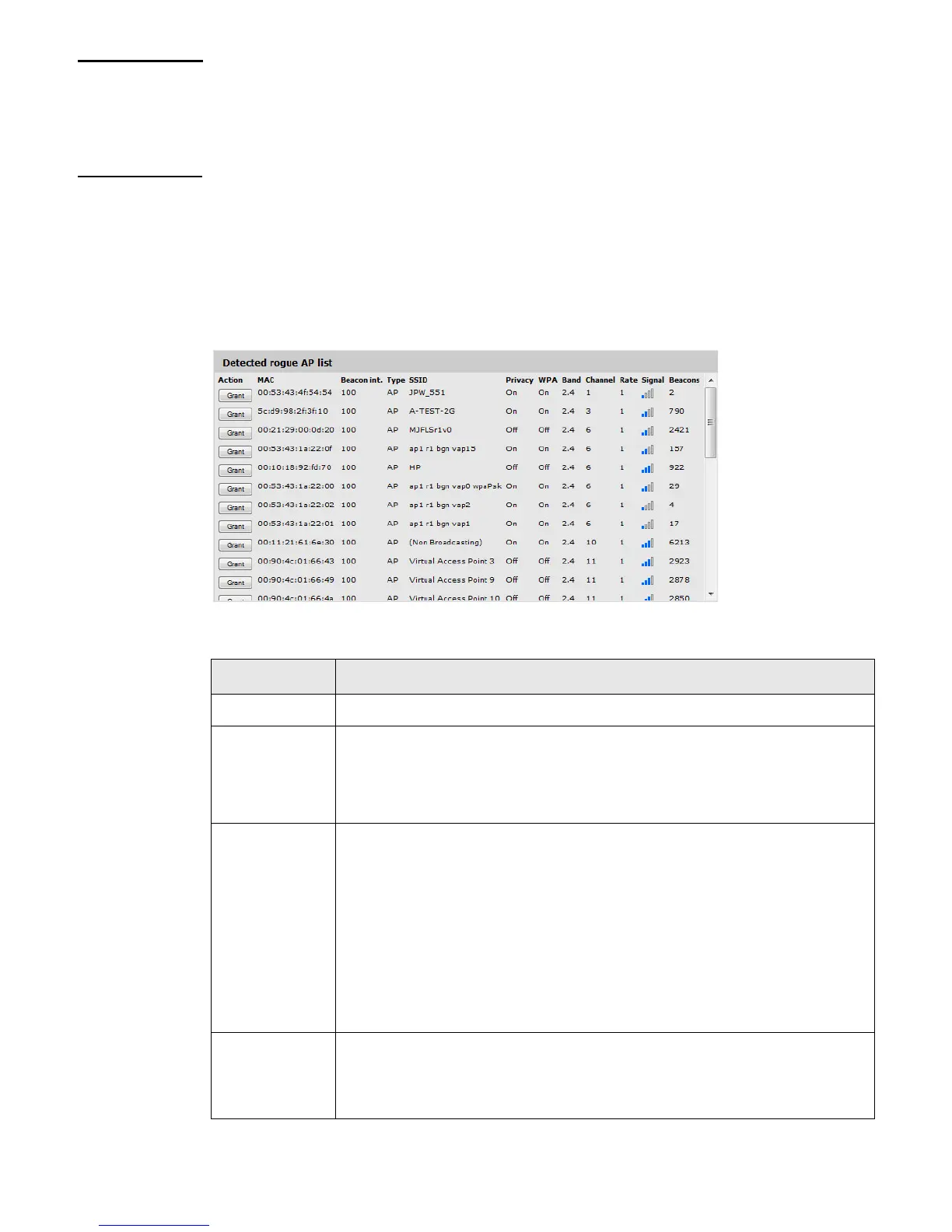Detecting Rogue APs 59
Note • Scanning is temporarily disabled when a trace is active (see the Tools > Network trace
page).
• Although the impact of scanning on AP performance is expected is minimal, to obtain the
best possible wireless performance (as needed for voice applications, for example),
disable scanning.
Detected and Known AP lists
When the M220 discovers an AP during a scan, it compares the MAC address of the AP
against the Known AP list (a list that you create or import using the capabilities on this
page). If the scanned AP does not appear in the list of known APs, it is displayed in the
Detected rogue AP list.
The following information displays for each detected rogue AP:
Field Description
MAC The MAC address of the neighboring AP detected during a scan.
Beacon Int. The Beacon interval being used by this AP. Beacon frames are transmitted
by an AP at regular intervals to announce the existence of the wireless
network. The default behavior is to send a beacon frame once every 100
milliseconds (10 per second).
Type The type of device:
• AP indicates the neighboring device is an AP that supports the IEEE
802.11 Wireless Networking Framework in Infrastructure mode.
• Ad hoc indicates a neighboring wireless client device running in Ad
hoc mode. Devices set to Ad hoc mode communicate with each other
directly, without the use of a traditional AP. Ad hoc mode is an IEEE
802.11 Wireless Networking Framework also referred to as peer-to-peer
mode or an Independent Basic Service Set (IBSS).
SSID The Service Set Identifier (SSID) for the AP.
The SSID uniquely identifies a wireless LAN and is also referred to as the
Network Name. It can be up to 32 alphanumeric characters.

